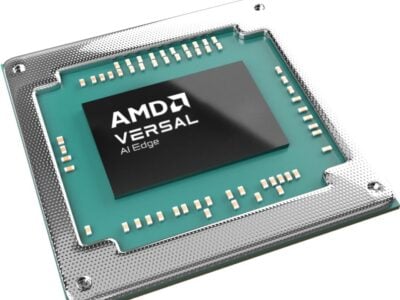
Airbus backs US silicon anode battery maker for high altitude aircraft
The investment by Airbus Defence and Space will help drive the development of higher volume production capacity along with higher energy density cells for a range of aerospace programmes, including the Zephyr High Altitude Pseudo Satellite (HAPS) unmanned aircraft that is built in the UK and other Urban Air Mobility innovation initiatives such as autonomous flying taxis and manned electric aircraft. The size of the deal was not disclosed.
“This partnership re-inforces the link between two market leaders, the newest generation batteries of the market matched with the most advanced HAPS programme. Zephyr is currently the only one operating in the stratosphere at an average altitude of 70,000ft and running exclusively on solar power, providing persistent local satellite-like services and supporting a wide range of applications and tasks.” said Jana Rosenmann, Head of Airbus Unmanned Aerial Systems.
Amprius launched its silicon anode technology in lithium ion batteries in 2013, and uses silicon-graphite composite anodes, lithium-rich cathodes, and high voltage electrolytes tailored for silicon alongside the silicon nanowire anodes. It’s R&D lab and pilot manufacturing facility for the fabrication of silicon nanowire anodes and cells are based in Fremont, California, with a materials R&D lab in Nanjing, China and a high volume battery manufacturing facility in Wuxi.
“We are extremely pleased to be working with Airbus and supplying batteries for the Zephyr program,” said Jon Bornstein, COO of Amprius. “The incorporation of Amprius’ 100% silicon nanowire anode-based lithium ion batteries into the Zephyr platform represents an important validation of this technology. Likewise, our development of high energy power cells for Urban Air Mobility will enable exciting opportunities in new aviation markets.”
The silicon anode batteries are also used for smartphones, wearables, drones, robotics, aerospace vehicles, electrical transportation, and military equipment.
Power management is a key element of the solar-electric design of the Zephyr stratospheric Unmanned Aerial Vehicle (UAV). It provides persistent surveillance of the environmental and landscape from heights above 60,000 ft (18km) to be above the commercial air routes and high winds, using solar panels and high energy battery packs to power the electric motor, cameras and communications link to the ground..
The increase in production volumes of the new generation batteries and research for future development will be used for the Zephyr programme.
Related silicon anode articles
- SILA NANO RAISES A TOTAL OF $340m
- POROUS ANODE BOOSTS BATTERY PERFORMANCE
- WACKER INCREASES STAKE IN NEXEON
- SPICE PROJECT TO BOOST ANODE PRODUCTION
- FARADAY ADDS FOUR BATTERY RESEARCH PROJECTS IN £55M BOOST
 If you enjoyed this article, you will like the following ones: don't miss them by subscribing to :
eeNews on Google News
If you enjoyed this article, you will like the following ones: don't miss them by subscribing to :
eeNews on Google News



